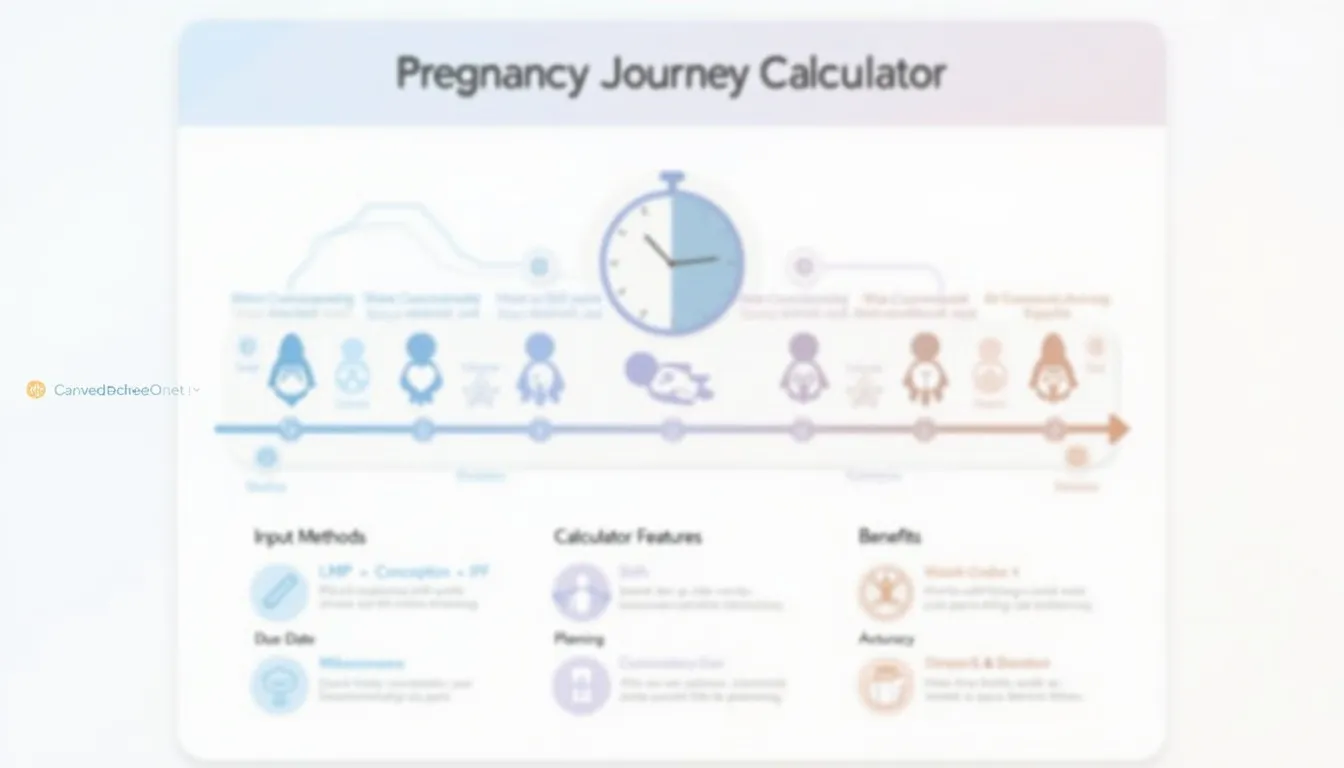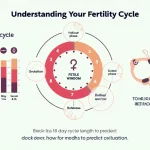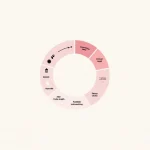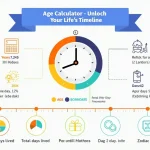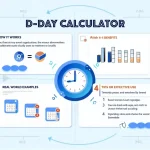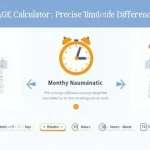Is this tool helpful?
How to Use the Pregnancy Calculator Effectively
Our comprehensive pregnancy calculator is designed to provide expectant mothers with accurate and personalized information about their pregnancy journey. Here’s a step-by-step guide on how to use this tool effectively:
1. Choose Your Input Method
Select one of the following options from the dropdown menu:
- Last Menstrual Period (LMP): Most common and accurate method for calculating pregnancy dates.
- Conception Date: Use this if you know the exact date of conception.
- IVF Transfer Date: Specifically for those who have undergone IVF treatment.
2. Enter the Relevant Date
Based on your chosen input method, enter the corresponding date:
- LMP: Enter the first day of your last menstrual period (e.g., May 1, 2023).
- Conception Date: Input the date you believe conception occurred (e.g., May 15, 2023).
- IVF Transfer Date: Provide the date of your embryo transfer (e.g., June 1, 2023).
3. Specify Your Average Menstrual Cycle Length (Optional)
Enter your average menstrual cycle length in days. If left blank, the calculator will use the standard 28-day cycle. For example, if your cycles typically last 30 days, enter “30” in this field.
4. Click “Calculate”
After entering all the necessary information, click the “Calculate” button to generate your personalized pregnancy details.
5. Review Your Results
The calculator will display the following information:
- Estimated Due Date (EDD): The projected date of your baby’s arrival.
- Current Gestational Age: How far along you are in your pregnancy, expressed in weeks and days.
- Estimated Conception Date: The approximate date when fertilization likely occurred.
- Current Trimester: Which of the three pregnancy trimesters you’re currently in.
- Fetal Development Milestones: Key developmental stages corresponding to your current gestational age.
Understanding Your Pregnancy Journey: An Introduction to Our Calculator
Pregnancy is a remarkable journey filled with anticipation, joy, and sometimes, a touch of uncertainty. Our pregnancy calculator is designed to be your trusted companion throughout this incredible experience, providing you with accurate, personalized information to help you navigate each stage of your pregnancy with confidence.
What is a Pregnancy Calculator?
A pregnancy calculator is a sophisticated tool that uses medical formulas and your personal information to estimate key dates and milestones in your pregnancy. It goes beyond simply counting weeks; it takes into account various factors to provide a comprehensive overview of your pregnancy timeline.
The Purpose and Benefits of Our Pregnancy Calculator
Our calculator serves multiple purposes:
- Accurate Date Estimation: It calculates your estimated due date (EDD) using advanced algorithms based on established medical practices.
- Pregnancy Tracking: It helps you understand your current stage of pregnancy and what to expect in the coming weeks.
- Developmental Insights: It provides information about your baby’s growth and developmental milestones.
- Personalized Information: By considering your unique menstrual cycle length, it offers more tailored results than standard calculators.
- Planning Tool: It assists in planning for prenatal care, maternity leave, and preparing for your baby’s arrival.
The Benefits of Using Our Pregnancy Calculator
1. Precision in Pregnancy Dating
Our calculator employs Naegele’s Rule, a time-tested method for estimating due dates, while also accounting for variations in menstrual cycle length. This results in a more accurate EDD compared to simple calendar counting.
$$EDD = LMP + 280 \text{ days} + (\text{Cycle Length} – 28 \text{ days})$$2. Comprehensive Pregnancy Timeline
Beyond just providing a due date, our calculator offers a complete pregnancy timeline, including:
- Conception date estimation
- Current gestational age
- Trimester breakdown
- Key fetal development milestones
3. Adaptability to Different Conception Methods
Whether you’ve conceived naturally, know your exact conception date, or have undergone IVF, our calculator adapts to your specific situation, ensuring accurate results for all users.
4. Educational Resource
The calculator serves as an educational tool, providing insights into fetal development and what to expect at different stages of pregnancy. This knowledge can help you feel more connected to your growing baby and prepared for the changes ahead.
5. Planning and Preparation Aid
With accurate date estimations, you can better plan for:
- Prenatal appointments and tests
- Maternity leave
- Baby shopping and nursery preparation
- Birth plan discussions with your healthcare provider
6. Anxiety Reduction
Having a clear understanding of your pregnancy timeline can help alleviate anxiety and uncertainty, allowing you to focus on the joy of your pregnancy journey.
How Our Pregnancy Calculator Addresses User Needs
Tailored Calculations for Varied Scenarios
Our calculator is designed to meet the diverse needs of expectant mothers by offering multiple input methods:
- Last Menstrual Period (LMP): For those with regular cycles who know their LMP date.
- Conception Date: Ideal for women who tracked ovulation or know their exact conception date.
- IVF Transfer Date: Specifically tailored for those who have undergone IVF treatment.
Accounting for Cycle Variations
Recognizing that not all women have a standard 28-day cycle, our calculator allows for cycle length customization. This feature ensures more accurate results for women with longer or shorter cycles.
Comprehensive Results
Our calculator provides a wealth of information beyond just the due date, addressing various questions expectant mothers might have:
- Current Gestational Age: Helps track pregnancy progress week by week.
- Trimester Information: Provides context for the current stage of pregnancy.
- Fetal Development Milestones: Offers insights into the baby’s growth and development.
Example Calculations
Let’s walk through a few example scenarios to illustrate how our calculator works:
Scenario 1: Using LMP with a 30-day cycle
- Input: LMP date – June 1, 2023, Cycle Length – 30 days
- Results:
- Estimated Due Date: March 7, 2024
- Conception Date: June 15, 2023
- Current Gestational Age (as of September 1, 2023): 13 weeks and 1 day
- Trimester: Second Trimester
- Fetal Development: Baby’s sex may be visible on ultrasound
Scenario 2: Using Known Conception Date
- Input: Conception Date – July 15, 2023
- Results:
- Estimated Due Date: April 5, 2024
- Current Gestational Age (as of September 1, 2023): 6 weeks and 6 days
- Trimester: First Trimester
- Fetal Development: Heart begins to beat
Scenario 3: IVF Transfer
- Input: IVF Transfer Date – August 1, 2023
- Results:
- Estimated Due Date: April 22, 2024
- Current Gestational Age (as of September 1, 2023): 4 weeks and 3 days
- Trimester: First Trimester
- Fetal Development: Implantation occurs
Practical Applications of Our Pregnancy Calculator
1. Early Pregnancy Planning
For couples trying to conceive, our calculator can help:
- Estimate fertile windows based on cycle length
- Plan conception around preferred birth months
- Prepare for lifestyle changes in anticipation of pregnancy
2. Healthcare Coordination
The calculator assists in coordinating prenatal care by:
- Helping schedule first trimester screenings at the optimal time
- Guiding the timing of important tests like the nuchal translucency scan
- Assisting in planning for the glucose tolerance test around 24-28 weeks
3. Work and Maternity Leave Planning
Expectant mothers can use the calculator to:
- Determine when to inform their employer about their pregnancy
- Plan the start and end dates of their maternity leave
- Coordinate work projects around their pregnancy timeline
4. Baby Shopping and Nursery Preparation
The calculator helps parents-to-be plan for their baby’s arrival by:
- Suggesting timelines for starting nursery preparations
- Guiding the timing of baby registry creation
- Helping plan baby showers at an appropriate stage of pregnancy
5. Fitness and Nutrition Planning
Knowing the exact stage of pregnancy allows for:
- Tailoring exercise routines to each trimester
- Adjusting nutritional intake based on fetal development stages
- Planning for increased calorie needs in later trimesters
6. Emotional and Mental Preparation
The calculator supports emotional readiness by:
- Providing a tangible timeline to process the upcoming life change
- Allowing partners to engage with the pregnancy journey through milestone tracking
- Helping manage anxiety by providing clear expectations for each stage
Frequently Asked Questions (FAQ)
Q1: How accurate is the due date provided by the calculator?
A1: Our calculator uses medically-established formulas to provide an estimated due date. However, it’s important to remember that only about 5% of babies are born on their exact due date. Most babies are born within a window of about two weeks before or after the estimated due date.
Q2: Can I use this calculator if I have irregular periods?
A2: Yes, you can. If you have irregular periods, it’s best to use the conception date or IVF transfer date option if you know it. If you’re unsure, use your best estimate for the LMP and consult with your healthcare provider for a more accurate dating.
Q3: How does the calculator account for leap years?
A3: Our calculator automatically adjusts for leap years in its calculations, ensuring accuracy regardless of whether your pregnancy spans a leap year or not.
Q4: Can I use this calculator if I’m pregnant with multiples?
A4: While the calculator can provide an estimated due date for multiple pregnancies, it’s important to note that twins and other multiples often arrive earlier than single babies. For the most accurate information, consult with your healthcare provider.
Q5: What if my cycle length varies from month to month?
A5: If your cycle length varies, use an average of your cycle lengths over the past few months. For the most accurate results, it’s best to consult with your healthcare provider who can take into account your specific menstrual history.
Q6: How often should I use this calculator during my pregnancy?
A6: You typically only need to use the calculator once at the beginning of your pregnancy to get your estimated due date and initial timeline. However, you can refer back to it throughout your pregnancy to check on fetal development milestones and your current gestational age.
Q7: Can this calculator predict my baby’s gender?
A7: No, this calculator cannot predict your baby’s gender. Gender determination typically requires medical tests such as genetic testing or ultrasound imaging.
Q8: Is this calculator a substitute for prenatal care?
A8: Absolutely not. While our calculator provides valuable information, it is not a substitute for professional medical care. Regular prenatal check-ups with your healthcare provider are essential for monitoring your health and your baby’s development throughout pregnancy.
Q9: How does the calculator determine fetal development milestones?
A9: The fetal development milestones provided are based on average developmental timelines established through medical research. However, every baby develops at its own pace, and your healthcare provider can give you the most accurate information about your baby’s specific development.
Q10: Can I use this calculator if I’m not sure about my LMP date?
A10: If you’re unsure about your LMP date, it’s best to use your best estimate and then confirm with your healthcare provider. They may recommend an early dating ultrasound to get a more accurate gestational age and due date.
Important Disclaimer
The calculations, results, and content provided by our tools are not guaranteed to be accurate, complete, or reliable. Users are responsible for verifying and interpreting the results. Our content and tools may contain errors, biases, or inconsistencies. We reserve the right to save inputs and outputs from our tools for the purposes of error debugging, bias identification, and performance improvement. External companies providing AI models used in our tools may also save and process data in accordance with their own policies. By using our tools, you consent to this data collection and processing. We reserve the right to limit the usage of our tools based on current usability factors. By using our tools, you acknowledge that you have read, understood, and agreed to this disclaimer. You accept the inherent risks and limitations associated with the use of our tools and services.
